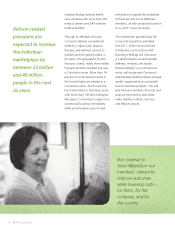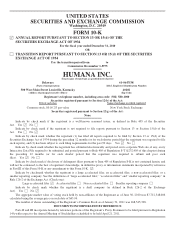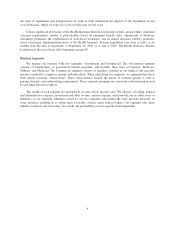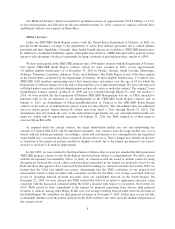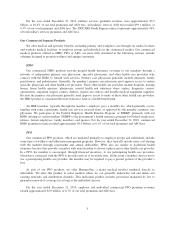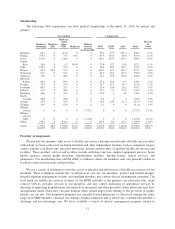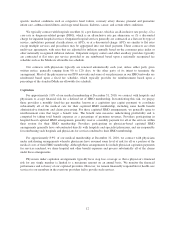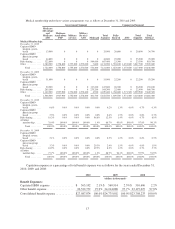Humana 2010 Annual Report Download - page 14
Download and view the complete annual report
Please find page 14 of the 2010 Humana annual report below. You can navigate through the pages in the report by either clicking on the pages listed below, or by using the keyword search tool below to find specific information within the annual report.the form of regulations and interpretations in order to fully understand the impacts of the legislation on our
overall business, which we expect to occur over the next several years.
Certain significant provisions of the Health Insurance Reform Legislation include, among others, mandated
coverage requirements, rebates to policyholders based on minimum benefit ratios, adjustments to Medicare
Advantage premiums, the establishment of state-based exchanges, and an annual insurance industry premium-
based assessment. Implementation dates of the Health Insurance Reform Legislation vary from as early as six
months from the date of enactment, or September 30, 2010, to as late as 2018. The Health Insurance Reform
Legislation is discussed more fully beginning on page 40.
Business Segments
We manage our business with two segments: Government and Commercial. The Government segment
consists of beneficiaries of government benefit programs, and includes three lines of business: Medicare,
Military, and Medicaid. The Commercial segment consists of members enrolled in our medical and specialty
products marketed to employer groups and individuals. When identifying our segments, we aggregated products
with similar economic characteristics. These characteristics include the nature of customer groups as well as
pricing, benefits, and underwriting requirements. These segment groupings are consistent with information used
by our Chief Executive Officer.
The results of each segment are measured by income before income taxes. We allocate all selling, general
and administrative expenses, investment and other revenue, interest expense, and goodwill, but no other assets or
liabilities, to our segments. Members served by our two segments often utilize the same provider networks, in
some instances enabling us to obtain more favorable contract terms with providers. Our segments also share
indirect overhead costs and assets. As a result, the profitability of each segment is interdependent.
4






